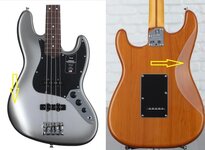At some point early on, all or most of the process must have involved mostly handmade bodies and necks. I was just wondering how much, if any, of this is still involved. Looks like automation rules. I found this little bit of reading on the Custom Shop processes. I guess the only hands-on parts of the process is in the assembly, except maybe for when Masterbuilders get involved.
View the expansive selection of Fender Custom Shop electric guitars currently available online at Wildwood Guitars. Artist Series, Stratocaster, & more

wildwoodguitars.com
Not clear to me is when this info mentions
"If you pick out any one Custom Shop employee from the sawdust maelstrom and watch them for even just a couple of minutes, you begin to notice a certain ease in their motions that suggests total mastery of the task at hand. You come to the realization that you are surrounded by highly-skilled craftspeople for whom excellence is a habit rather than a goal to be striven for."
If everything is automated, what's the employee's
"total mastery of the task at hand". If the machine is doing most or all the work, what mastery of what task?
I know I'm nitpicking, just trying to get a clear picture, this is probably all PR stuff to bolster the image and reputation - ya think?



